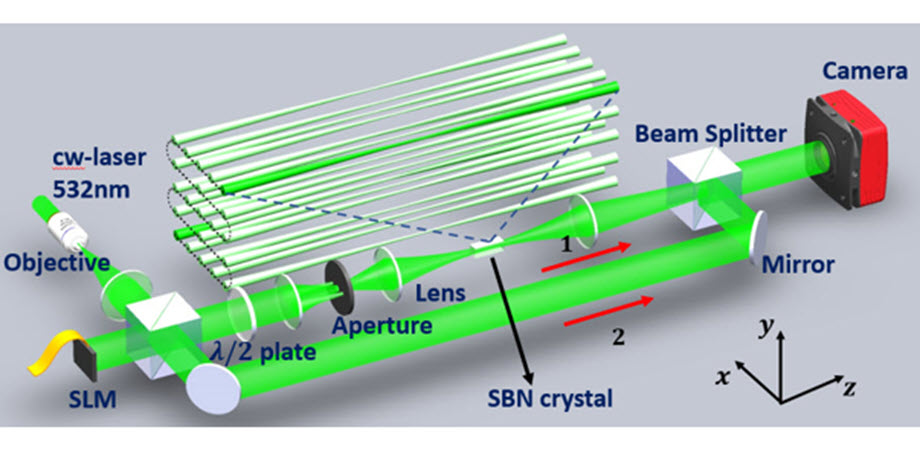
A novel topological edge soliton developed for nonlinear photorefractive lattices enables robust light beams is promising for photonic technology. Diffraction is a natural property of light beams. It allows light to bend around obstacles. Because light serves as a carrier of information, some of the distorting effects of diffraction must be mitigated for many technological applications. Topological insulators, first unveiled in condensed matter physics, have attracted interest for over a decade. A photonic topological insulator can help ensure consistent propagation of a light beam along its edges. Robust photonic edge states are key to developing on-chip photonic technology.
While a photonic topological insulator can secure an edge state and prevent it from radiating into the bulk of the insulator, the edge state can still broaden or spread along the edge of the insulator, due to diffraction during propagation. To solve this problem, nonlinearity is introduced into the photonics topological insulator to construct a topological edge soliton. A soliton is a solitary wave that maintains its shape during propagation, due to a balance of diffraction and nonlinear self-action. The resultant soliton inherits the topological protection of its corresponding linear topological edge state.
Topological edge solitons can effectively prevent the diffraction and radiation problems of light beams. To date, they have mostly been investigated in photonic topological insulators with broken time-reversal symmetry, which is strongly dependent on an applied magnetic field. However, photonic systems are naturally insensitive to magnetic fields, so elaborate designs for waveguide structures are often required, posing challenges both in theoretical design and experimental implementation.
As reported in Advanced Photonics, a research team from Xi’an Jiaotong University and Nankai University, China, recently discovered a novel kind of topological edge soliton that is independent of magnetic field. Using nonlinear photorefractive lattices, they harness the valley Hall effect, which occurs as a result of adjustments to refractive indices in a composite lattice structure. The “valley” is a region in the band structure of the lattice. If the symmetry of the lattice is preserved, a Dirac cone with its characteristic hour-glass shape can be generated. By adjusting the composite lattice symmetry spatially, the researchers produce the wing-like, tilted shape of a type-II Dirac cone. These cones have dispersion properties that differ according to the direction of measurement, and they allow quasiparticle-mediated phenomena for which analogies do not exist in high-energy or condensed-matter physics. The valley Hall edge soliton inherits its topological protection from its linear counterpart and does not require any external magnetic field. The result is a light beam that is robust, localized, and maintains its shape during propagation over distance.
Corresponding author Yiqi Zhang of Xi’an Jiaotong University’s School of Electronic Science and Engineering says, “This work provides a new approach for spatial manipulation of topological edge states. The results of our research suggest that the interplay of different physical mechanisms may bring new possibilities in developing photonic techniques.” The authors believe that the demonstrated approach may have potential applications in the development of future photonic chips. Apart from its potential application, the discovery may also contribute to deepening the collective understanding of extraordinary physical quasiparticles, such as Lorentz-violating type-II Dirac/Weyl fermions. https://spie.org/news/topological-valley-hall-edge-solitons-in-photonics








Recent Comments